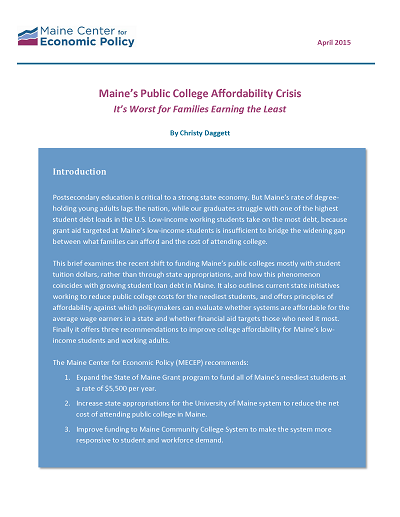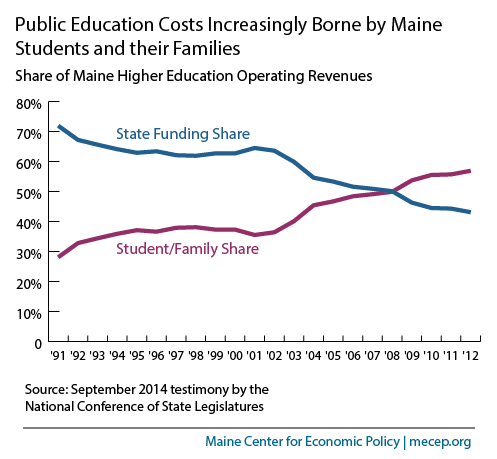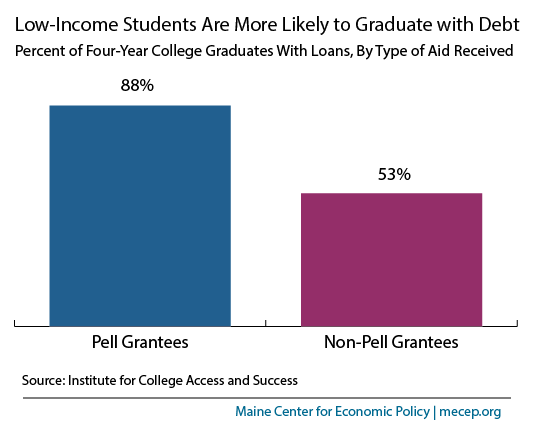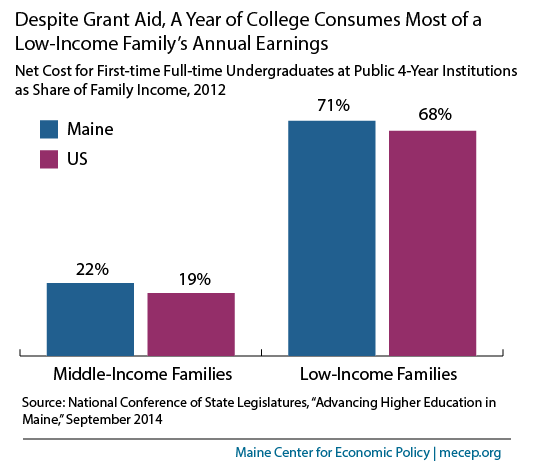It’s Worst for Families Earning the Least
Postsecondary education is critical to a strong state economy. But Maine’s rate of degree-holding young adults lags the nation, while our graduates struggle with one of the highest student debt loads in the U.S. Low-income working students take on the most debt, because grant aid targeted at Maine’s low-income students is insufficient to bridge the widening gap between what families can afford and the cost of attending college.
This brief examines the recent shift to funding Maine’s public colleges mostly with student tuition dollars, rather than through state appropriations, and how this phenomenon coincides with growing student loan debt in Maine. It also outlines current state initiatives working to reduce public college costs for the neediest students, and offers principles of affordability against which policymakers can evaluate whether systems are affordable for the average wage earners in a state and whether financial aid targets those who need it most. Finally it offers three recommendations to improve college affordability for Maine’s low-income students and working adults.
The Maine Center for Economic Policy (MECEP) recommends:
- Expand the State of Maine Grant program to fund all of Maine’s neediest students at a rate of $5,500 per year.
- Increase state appropriations for the University of Maine system to reduce the net cost of attending public college in Maine.
- Improve funding to Maine Community College System to make the system more responsive to student and workforce demand.
Written by Christy Daggett.
For a PDF of the executive summary of this policy brief, click here.
For a PDF of this policy brief, click here.






